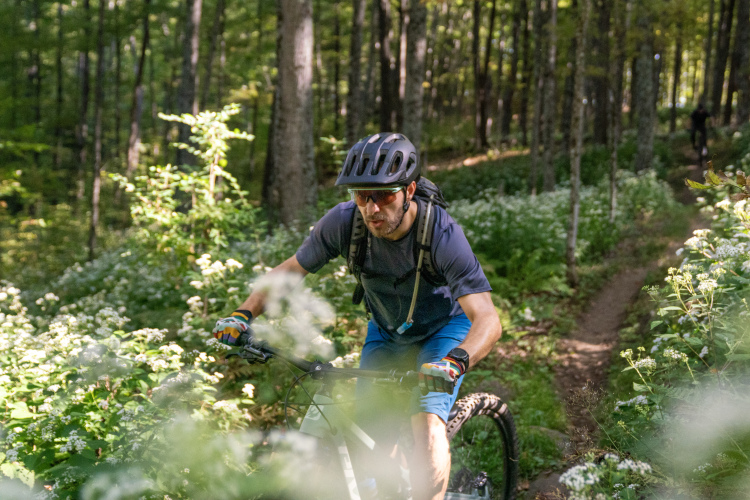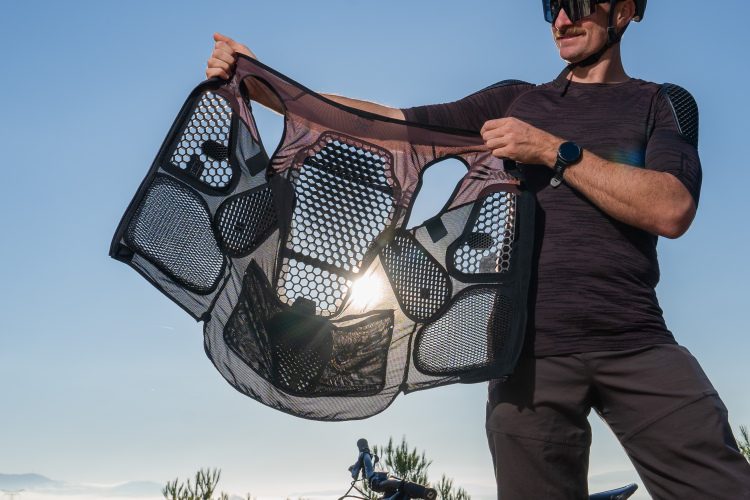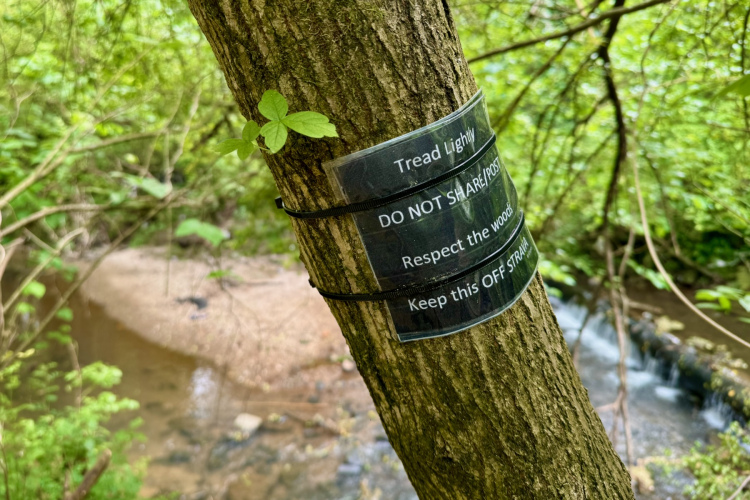 It seems like there’s no shortage of GPS applications for the iPhone these days but honestly most of them suck. Confusing interfaces, limited functionality, and poor reliability are par for the course, leaving us wondering why no one has tried to mimic successful interface designs from real GPS companies like Garmin. Then we tried an iPhone app called GPS Tuner that does pretty much everything our Garmin does – and more.
It seems like there’s no shortage of GPS applications for the iPhone these days but honestly most of them suck. Confusing interfaces, limited functionality, and poor reliability are par for the course, leaving us wondering why no one has tried to mimic successful interface designs from real GPS companies like Garmin. Then we tried an iPhone app called GPS Tuner that does pretty much everything our Garmin does – and more.
Interface
The GPS Tuner interface is mostly black and white which makes it easy to read and navigate. The trip computer screen is completely customizable and you can choose a layout with 2, 4, or 6 data fields. I found even the 6-field layout was easy to read on the bike and changing the data within each field was a cinch.
Mapping
Clearly any GPS app for the iPhone should place an emphasis on mapping and this is where GPS Tuner shines. You can choose from Google or one of several flavors of OpenStreet Maps (including a cycling-specific version) for the basemaps which are downloaded as needed. There’s also an option to download OpenStreet Map tiles before you head out of cell data range, helpful for forays into the backcountry.
GPS Tuner allows you to measure distances on the map by drawing a line with your finger which works well for estimating distances. There’s also a routing tool called SmartRoute Off-Road that claims to find the best route between two points, even through roadless areas. Routing is completed server-side meaning you need a data connection to do it but once the route is complete you can save it to your phone for later use. One complaint I have about the map screen is that it doesn’t orient the map in the direction of travel and I found myself twisting my head to get a better idea of what was coming up.
 The elevation chart in GPS Tuner shows you a 2-dimensional plot of your altitude vs. time and the zoom feature makes it easy to see more detail. I’ve personally been disappointed to find that many entry level fitness GPS units omit this feature despite its usefulness on the trail.
The elevation chart in GPS Tuner shows you a 2-dimensional plot of your altitude vs. time and the zoom feature makes it easy to see more detail. I’ve personally been disappointed to find that many entry level fitness GPS units omit this feature despite its usefulness on the trail.
Track and Data Recording
Just like the other GPS apps out there, GPS Tuner allows you to record tracks, routes, and waypoints during your ride. I love how easy it is to start – just hit the record button and go! There’s also a pause and stop button which is a great analogy that I hope other manufacturers latch onto. Since the iPhone doesn’t have a file system per se, you’ll need to email saved tracks to yourself in either GPX or KML format. Oddly enough, the GPX track export function actually saves the data in route format which isn’t the same thing at all. Luckily there are utilities that will convert route data to track data but it’s annoying to have the do the extra step (there may be a setting to fix this in the app but I found the online help to be somewhat incomplete).
In terms of track recording accuracy, you’re really at the mercy of the iPhone hardware and on tight singletrack my track data came out looking like a plate of spaghetti. The trackpoint polling interval can’t be changed either which makes detailed, accurate trail mapping difficult.
GPS Tuner presents a set of summary data for saved tracks and I found some of the stats from a recent ride pretty interesting. We’ve all been on rides where we think, “that seemed like way more climbing than descending,” and GPS Tuner can tell you if it’s true with a display of the overall % climbing/descending/flat. On a 20 mile ride last night I clocked 45% descending, 47% climbing, and 7% flat which actually sounds pretty accurate. The app also said my max acceleration was 42 ft/s^2 which is a little suspect considering that free fall is only 32 ft/s^2.
this trail is actually a loop that doesn’t cross over itself but you’d never know it from this track data
Other Functions
 The GPS Tuner app includes some bells and whistles the average mountain biker may or may not find useful. There’s a bubble level (which I used to check the angle of my seat, 2-degrees) and a camera for taking geo-tagged photos (the iPhone’s built-in camera can do this too).
The GPS Tuner app includes some bells and whistles the average mountain biker may or may not find useful. There’s a bubble level (which I used to check the angle of my seat, 2-degrees) and a camera for taking geo-tagged photos (the iPhone’s built-in camera can do this too).
GPS Tuner features an emergency function that, when activated, sends an email to a list of pre-defined contacts with your last recorded location. Just remember – you need data access and this feature won’t notify emergency responders directly (for that, call 911 on your phone!).
Limitations
Despite all the great features GPS Tuner has to offer, the biggest limitation to using the app on the trail is the iPhone hardware itself. I found my phone’s touchscreen is worthless when I’m wearing gloves and mounting the phone to my handlebars requires an extreme act of faith. In playing around with the app I also found there’s no easy way to “quit” which keeps the app running in the background even when you’re not recording a track, draining the battery in a little under 2 hours. The solution: when you’re done, double tap the home button on your main app screen, then hold down your finger over the row of icons at the bottom until you see the minus sign for quitting the app.
GPS Tuner is our choice for the best GPS iPhone app thanks to its clean interface, solid feature list, and ease of use. And while it won’t replace our Garmin units for serious mountain biking trips, it’s a good choice for those who aren’t ready to commit to a standalone GPS unit for mountain biking. Check out the free version in the iPhone app store or buy the full version for just $6.99.
Thanks to the folks at GPS Tuner for providing a review copy of the app.












10 Comments
Dec 23, 2010
Jan 15, 2012
I recommend it if you still don't have a computer or if you want a backup.
Dec 22, 2010
Also, check out my "My Tracks" page. You can get it here at my blog.
http://white-knuckled.blogspot.com/2010/12/follow-my-tracks.html
Dec 22, 2010
MotionX is the only one I've used. It was $1.99 I think. It does a good job as far as mapping is concerned, tho I do wish it took more points to be more accurate. It'll save the tracks on your phone, and you can e-mail them to yourself as well, and even post share them on your facebook page. Elevation info is usually way off when compared to a real GPS unit with a barometric altimeter.
You should do an iPhone GPS app shootout!
Dec 23, 2010
You could possibly spend more horizontal miles climbing if the climbs were more gradual than the descents, but logically if the descents are steeper you'll probably (but not necessarily) be going that much faster down them.
Also to me it would make more sense to spend more horizontal miles climbing because that would mean the climbs wouldn't be quite as strenuous, just a little bit longer.
Jul 6, 2012
The Pro version has some added features, including options to the basic Google mapping on the free version, which look interesting.
In hindsight, I plan to take a closer look at the Garmin bike comps...With as many times as I bail per ride, mounting a smartphone on the bars could get quite costly.
Dec 22, 2010
I'll have to check out My Tracks too - perhaps a GPS app shoot-out is in order!
Dec 24, 2010
Nov 3, 2011
Nov 3, 2011
http://www.singletracks.com/blog/mtb-gear/ram-iphone-handlebar-mount/
http://www.singletracks.com/blog/wp-content/uploads/2011/10/iphone_bike_mount_topeak.jpg